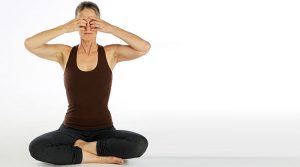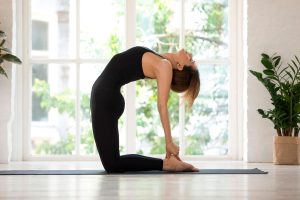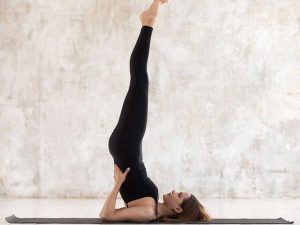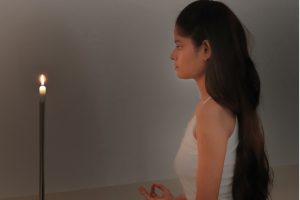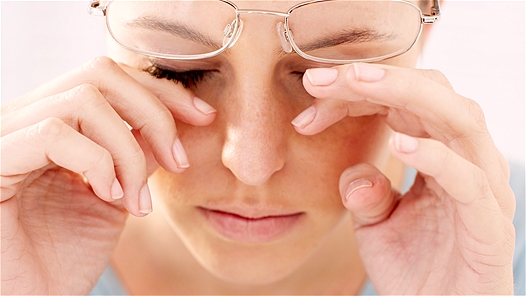
WEAK EYESIGHT – YOGA ASANAS
- January 30, 2023
- Posted by Dr. Vaidya Karanvir Singh
- 0 Comment(s)
Weak eyesight is a common problem occurring nearly 1 out of 5 person. If someone is suffering from blurred vision than it is associated with the condition such as myopia ,hyperopia , presbyopia and astigmatism.
Table of Contents
TYPES OF WEAK EYESIGHT:
Most common adult vision problems are:
Blurred Vision (Refractive Errors):
MYOPIA: when a person see the near objects clearly but distance objects are blurred this is also called as nearsightedness.
HYPEROPIA: when a person see distant object clearly but near objects are blurred. This is also caleed as farsightedness.
PRESBYOPIA: more than 40 years of age ability to see the close objects like reading small print is worse .this condition is called as presbyopia.
ASTIGMATISM:it is imperfection in the curvature of cornea or lens . with this vision is blurry at all distances.
Age related macular degeneration. :
It is an eye disease that can blur your central vision . it occurs when damage to the macula that controls sharp , straight vision.
Glaucoma:
it is a condition that damage optic nerve which is caused by increased intraoccular pressure in eye .
Cataract:
Cloudy area in the lens of eye that leads to decrease in vision .
Diabetic Retinopathy:
It is a complication of diabetes that is caused by damage to the blood vessels of the light sensitive tissue at the back of retina.
Most common childhood vision problems are:
Strabismus:
It is a condition in which one eye is turned in direction that is different from the other eye. It can be of different types i.e esotropis, exotropia, hypertropia, hypotropia.
Amblyopia.:
it is a condition in which result of brain and the eyes not woking together. . the brain ignores visual information from one eye which cause problem with vision development . it is also called lazy eye.
CAUSES OF WEAK EYESIGHT:
- Improper nutrition.
- Infection : dust particles and pollutants can lead to infection and allergies.
- Unprotected screen exposure.
- Older age
- Deficiency of vitamin –A
- Diabetes mellitus.
- Age related macular degeneration.
SIGNS OF WEAK EYESIGHT:
- Blurred vision
- Double vision.
- Squinting .
PREVENTIVE MEASURES:
- Exercise daily.
- Practice yoga.
- Cover your eyes in dusty areas
- Maintain a healthy diet.
- More intake of vitamin A.
- Stop smoking.
- Wear sunglasses.
EXERCISE FOR IMPROVEMENT OF EYESIGHT :
PALMING :
Method:
- Rub your hands together to generate heat .
- Put your palms against to eyes for few seconds.
- Repeat 5-7 times.
Benefits:
It helps in to relieve eye strain and boost eyesight.
EYE ROLLING :
- Sit straight.
- Spine straight.
- Put your hands on lap.
- Rolling the eyes in clockwise direction for a few minutes.
- Take a break and roll the exercise in anti clock wise direction.
- Repeat 5 times.
REFOCUSING:
- When you are working on the laptop at that time ,you look away from the screen and focus on some object far away .
- Look at palm and then focus on distant object.
- Repeat 5 times.
BLINKING:
- Sit comfortably
- Blink for 10 times quickly.
- Close your eyes and relax for 20 seconds
- Concentrate on your breathe .
- Repeat 5-7 times.
BEST FOOD FOR EYE HEALTH
1.FISH :
Omega 3s have been found in fish and beneficial for eye and meibomian gland dysfunction.it also help in macular degeneration
2.NUTS.
3.CITRUS FRUITS.
4.GREEN LEAFY VEGETABLES.
5.SWEET POTATOES.
6.EGGS.
7.BEEF.
YOGA ASANAS FOR WEAK EYESIGHT:
BHRAMARI PRANAYAM:
Method:
- Sit in a crossed legged position .
- Close your eyes and ear with the help of fingers.
- Index finger is placed in between the eyebrow and ring or little finger is placed at the base of nostrils.
- Focus in between of eyebrows.
- Take deep breathe and hold the breathe for 2-3 seconds and slowly exhale through the nose while producing a huming sound.
- Mouth should be closed.
- Repeat 5 times.
Benefits:
- Helps in reducing blood pressure.
- Builds confidence.
- Instant relief from tension , anger, anxiety.
- Improves concentration and memory.
USHTRASANA
Method:
- Sit on the floor stretching your leg and spine erect and palms on the ground side by the buttocks.
- Bend your leg by the keens and sit on your heels placing the buttocks in between the heels, the right big toe overlapping the left toe .
- keeping your knees in line with the shoulders and sole of the feet facing downward
- Put hand on thighs.
- Inhale and arch your back and put your palms on the heels of the feet.
- Keep your arms straight.
- Do not strain your neck keep it neutral. Neck will be free.
- Stay in this final position for couple of breaths or as much you can do it with easy way .
- Breathe out and slowly come to normal position withdrawing your hands from the feet.
Benefits:
- Imroves flexibility of spine and strengthens it.
- Improves digestion
- Gives relaxation to the lower back.
- Indigestion
- Reduces abdomen fat.
- Thyroid and parathyroid.
Contraindications:
- Hernia
- Neck or shoulder injury.
- Recent abdominal surgery.
SARVANGASANA:
Methods:
- Lie down in supine position.
- Raise the legs to 30 degree than 60 degree than 90 degree than 120 degree with the hands supporting the back .
- The elbow should rest on the ground and the toes joined and straight .
- Keep eyes close .
- Starting with 2 minutes.
- Bend the legs slightly backwards .
- Remove the hands from back and place them straight on ground.
- Regain the original position slowly while keeping hands on the floor.
Benefits:
- Stimulates throid and parathyroid glands.
- Nourishes the brain.
- Strectch the heart muscles by returning more venous blood to the heart.
- Relief from constipation, indigestion.
Contraindication:
- Diarrhea
- Headache
- High blood pressure.
- Neck injury.
- Mensturation
TRATAKA
Methods :
- Sit in meditation pose in front of candle.
- Open the eyes and look at the flame without blinking. .
- Close the eyes again.
- Repeat the practice 3 times .
- The practice time should gradually build.
Benefits:
- Purifies the eyes and strengthens the eye muscle.
- Correct short-sightedness.
- Improves vision, concentration and memory.
- Cure sleep disorder such as headache, insomnia etc.

Dr. Vaidya Karanvir Singh is the younger Vaidya in Chandigarh Ayurved & Panchakarma Centre. He is the fourth generation in his family who is practicing as a general consultant in Ayurved & Panchakarma treatment at Chandigarh. In his practice, he had treated more than 1 Lakh Plus patients worldwide.


